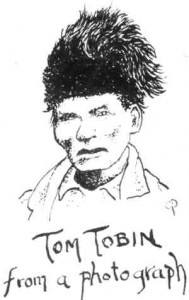Review by Ed Quillen
Tourism – November 2008 – Colorado Central Magazine
Backroads & Byways of Colorado Drives, Day Trips & Weekend Excursions
by John Daters & Drea Knufken
Published in 2008 by the Countryman Press
ISBN 978-0-88150-787-4
WHILE THIS BOOK FEATURES a few of the 25 official Colorado Scenic Byways, it does not cover them all, and its dozen routes include a few spectacular tours, like Trail Ridge Road in Rocky Mountain National Park, which are not among the official scenic routes designated by CDOT, our state department of transportation.
When I get a guidebook for review, I generally check a relevant section against what I know of the place. If they’re in general agreement, I figure it’s a decent guidebook. This one fails miserably. Just about any page I read offered glaring errors, at least when it comes to history and lore.
For instance, after the 1859 discovery of gold in California Gulch, the news “spread like wildfire, and soon prospectors had built their cabins and hoist houses — above-ground structures associated with mine shafts — not only in the town of Leadville, but throughout a series of towns in an area now known as Lake County.”
The settlement that sprang up then was Oro City. Leadville didn’t emerge until 1877-78. Oro City was a placer camp with flumes and sluice boxes; it did not have mine shafts, and thus no need for hoist houses to protect the hoisting machinery from the weather.
“In 1881 the Denver and Rio Grande Railroad built a narrow-gauge route over Tennessee Pass. At 10,240 feet it was the highest mountain pass railroad in the United States.”
At 10,240 feet it wasn’t even close to the highest, even when the tracks were laid. Marshall Pass, constructed at the same time, topped out at 10,842 feet. Two railroads crossed 11,318-foot Frémont Pass, one before there were rails across Tennessee Pass. The American altitude record is held by the Denver & Salt Lake at 11,660-foot Rollins Pass.
“The Twin Lakes area became a major hub through which not only the Leadville-Aspen road, but the Denver and Rio Grande Railroad tracked.” No railroad ever served Twin Lakes.
“You’ll see the sprawling Climax Molybdenum Company in front of you. This is where Leadville derived the lead that is its namesake. The mine at one time employed more than 60,000 people…. The nearby township of Climax used to house 1,000 employees until a 1959 strike, when it became a ghost town.”
No, they didn’t mine lead at Climax. The mine’s top employment was about 3,000 people, not 60,000. Climax didn’t become a ghost town as a result of a strike. As the mine expanded, it needed the space occupied by the company town, and many buildings were moved to Leadville.
Elsewhere, the writers advise motorists to “notice the huge Climax coal mine.” Lead, coal, molybdenum, what’s the difference, right?
This could continue indefinitely, as I noticed a host of errors in other chapters, but I’ll move on. The book’s organization puzzled me. The map in front indicated 13 byways, among them the Collegiate Peaks around Buena Vista. But there’s no such chapter in the book. It’s divided into four sections: Western Slope, Continental Divide, Front Range, and Eastern Plains.
Trail Ridge, which crosses the Great Divide, is with the Front Range. But the Divide chapter includes areas like the Flat Tops near Meeker and the Gold Belt Tour of the Cripple Creek area, that aren’t anywhere near the Divide.
The writing, if you can ignore all the errors, is generally fluid and easy to follow. That’s the best I can say for this sloppy book. What it says about restaurants and lodging may be valid, but I sure wouldn’t trust these writers to get anything right. We all make mistakes, but this goes far beyond the occasional slip.
You’re far better off exploring on your own and stopping to read roadside historical markers, rather than relying on anything in this book.

